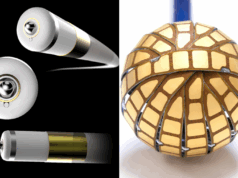
Cephalic vein cutdown (CVC) and axillary vein access (AVA) are both effective approaches for cardiac implantable electronic device (CIED) lead implantation, and could avoid the complications usually observed with traditional subclavian vein puncture (SVP). This was the conclusion of a meta-analysis of studies comparing SVP and axillary vein puncture (AVP) versus CVC for CIED implantation. Efforts should be made for the widespread adoption of CVC, the study’s authors conclude.
The meta-analysis, conducted by Mohit Turagam (Icahn School of Medicine at Mount Sinai, New York, USA) and colleagues, was published online in the JACC: Clinical Electrophysiology, and sought to evaluate the efficacy and safety of venous access techniques for CIED implantation. The research was due to be presented at the American College of Cardiology’s Scientific Session Together with World Congress of Cardiology (ACC.20/WCC; Chicago, USA), scheduled to take place 28–30 March, but which has now been cancelled due to the coronavirus outbreak.
The study team note that minimally invasive venous access is a prerequisite for lead insertion of CIEDs such as permanent pacemakers, implantable cardioverter defribrillators, and cardiac resynchronisation therapy (CRT). CVC and SVP are both widely used techniques for lead insertion, however; the use of one technique over the other is largely limited by operator experience and local practice patterns. Fluoroscopy-guided AVP has emerged as an alternative approach and seems to be associated with higher periprocedural success and lower overall complications, the study team adds.
Based on the current clinical evidence, Turagam and colleagues note, it remains unclear which technique is safer and preferred during CIED implantation. The researchers performed a systematic review and meta-analysis of all the studies available to evaluate the efficacy and safety of SVP and AVP compared with CVC for CIED implantation.
A systematic search was performed in PubMed, Google Scholar, EMBASE, SCOPUS, ClinicalTrials.gov, and across various scientific conferences for studies comparing SVP versus CVC and AVP versus CVC. Studies that included patients ≥18 years of age, with at least one month of follow-up, evaluating the efficacy and safety of SVP/AVP with CVC and that reported at least one clinical outcome of interest, were included in the study. The main outcomes of interest were: acute procedural success, complications—pneumothorax, device/lead failure, pocket haematoma/bleeding, and device infection—and total procedure time.
Among 352 records identified, 23 studies—three randomised controlled trials, and 20 non-randomised prospective/retrospective studies—met inclusion criteria. Twenty studies compared SVP with CVC, two studies compared AVP with CVC and one study compared both SVP and AVP with CVC. The meta-analysis included 35,722 patients, of which 18,009 had SVP, 409 had AVP, and 17,304 had CVC. The follow-up duration ranged from one month to eight years.
In studies detailing performance of SVP versus CVC, Turagam and colleagues note, procedural success was higher with SVP, whereas there was no difference in risk of procedure time between the two groups. SVP was associated with a higher risk of pneumothorax (relative risk (RR): 4.88; 95% confidence interval (CI): 2.95–8.06) and device/lead failure (RR 2.09; 95% CI 1.07–4.09) compared with CVC. There was no difference in pocket haematoma/bleeding or in device infection between the two groups. Test of heterogeneity was high for acute procedural success (I2 = 89%), procedure time (I2 = 96%), and pocket haematoma/bleeding, or device infection.
Furthermore, the study notes that compared with CVC, acute procedural success was significantly higher with AVP (RR 1.25; 95% CI 1.18 1.32). Total procedural time was significantly shorter with AVP compared with CVC (mean difference -7.84 minutes; 95% CI -8.77 to -6.90). There was no difference in the risk of pneumothorax between the two groups, device/lead failure, pocket haematoma/bleeding or device infection.
In discussing the findings, Turagam and colleagues write that SVP is known to be associated with a higher risk of lead failure and fractures, due to the phenomenon of “subclavian crush” where the lead is mechanically entrapped between the costoclavicular ligament and subclavius muscle. “In contrast,” they add, “leads implanted through CVC and AVP are exposed to smaller compressive forces than SVP. This explains the higher risk of lead failure with SVP but no difference between CVC and AVP observed in our results.” They note that a similar trend of higher lead failure with SVP was observed across the included studies over a period of 25 years despite significant advances in lead technology.
The study describes CVC as the “safest venous access available for lead insertion”, noting that it avoids the complications related to SVP such as pneumothorax and subclavian crush syndrome. However, the study team cautions that the technique has a steep learning curve, “often associated with poor success rate and higher blood loss.” Furthermore, they suggest, “AVP remains a suitable alternative with similar safety efficacy as CVC with a shorter learning curve.” Efforts for widespread dispersion and adoption of CVC should be made continuously, the study team remark.









